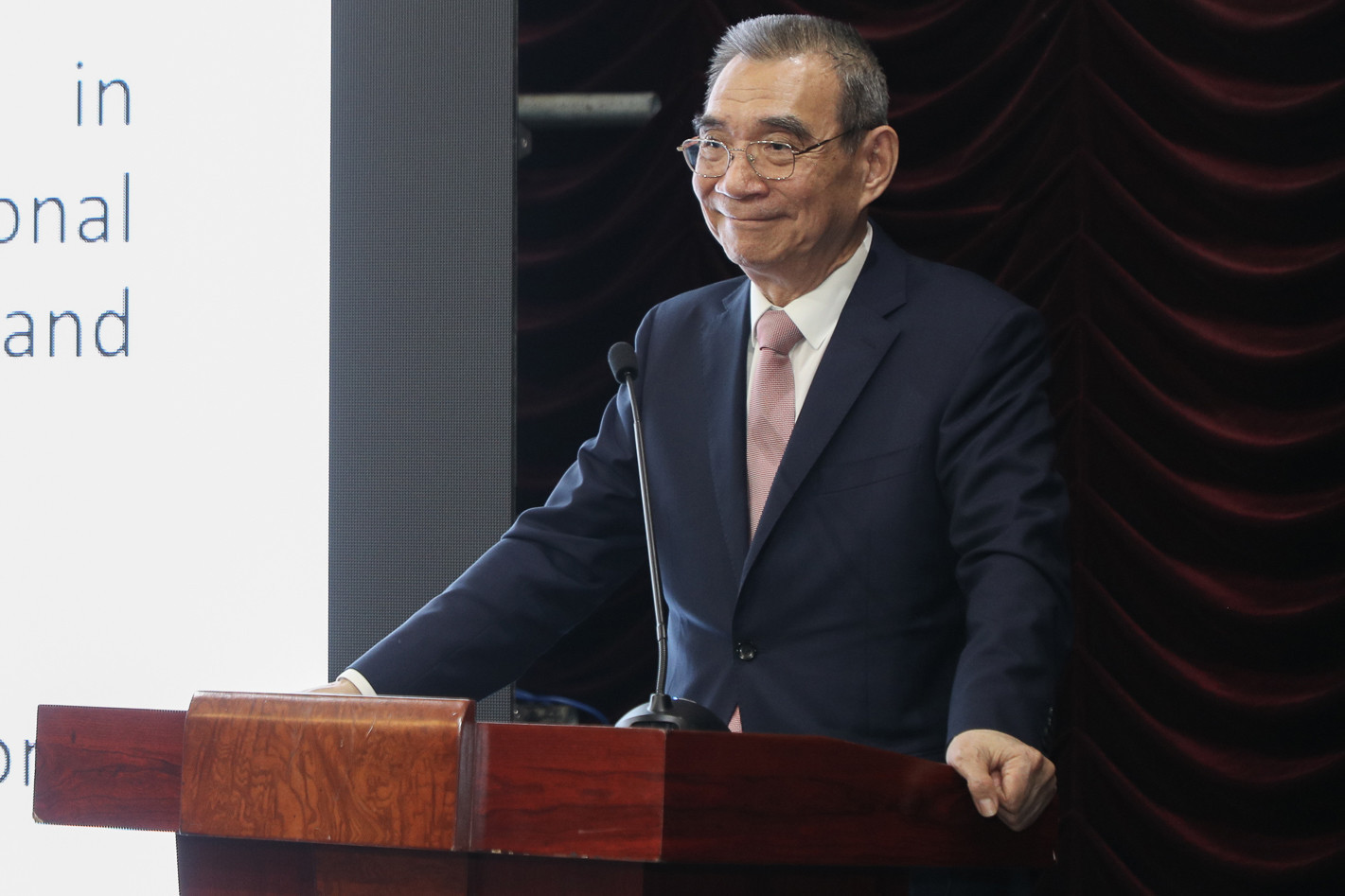At the forum, Lin remarked that Vietnam's economic growth since the Doi Moi reforms of 1986 has been remarkable, with an average annual growth rate of 6.6% from 1986 to 2023. GDP per capita increased from USD 238 in 1985 to USD 4,282 in 2023. Vietnam has set an ambitious goal of becoming a high-income country by 2045.
This aspiration is shared by many developing nations. However, Lin presented a rather discouraging statistic: from the end of World War II to 2008 (when he became Chief Economist and Senior Vice President of the World Bank), only two out of nearly 200 developing economies successfully transitioned from low-income to high-income status.

In that same period, just 13 economies advanced from middle- to high-income, most of them in East Asia.
“Most countries remain stuck in the middle-income trap. That’s a disappointing outcome,” he said.
This reality poses a considerable challenge for Vietnam’s vision of prosperity over the next two decades.
Nevertheless, Lin concluded that the middle-income trap is not a predetermined fate. With sound strategy and visionary, long-term industrial policy, Vietnam’s GDP per capita can reach high-income levels by 2045.
Currently, Vietnam's per capita GDP mirrors that of China in 2005. In just 20 years, China has undergone a technological and structural transformation, and by 2024 its per capita GDP reached USD 13,873. The country is projected to surpass the high-income threshold of USD 14,005 by 2025.
This is an encouraging signal from Professor Lin Yifu, a leading modern Chinese economic thinker who advocates for a balanced approach between state guidance and market dynamics.
To offer this motivation, Lin traced key global development trends since World War II.
Post-WWII Structuralist economics
After gaining independence from colonial rule, many developing countries, like Vietnam, began nation-building efforts in the 1950s and 1960s. These countries often had very low incomes and faced widespread poverty, outdated infrastructure, and persistent trade imbalances.
Many tried to mimic the structure of advanced economies, focusing heavily on capital- and technology-intensive heavy industries and import substitution. These industries were protected by the state through tariffs and trade barriers, often implemented without clear strategic planning.
But the results fell short. Leaders discovered that investing in industries without a competitive advantage or readiness in capital, labor, and technology yielded short-lived growth. Over time, these economies stagnated, domestic enterprises lost competitiveness, and fiscal and trade deficits reemerged. This pattern played out in Africa and South America, where initial progress collapsed into stagnation, widening the income gap between developing and developed nations.
“Their development was not sustainable. These lessons offer valuable guidance for our future,” Lin noted.
The rise of neoliberalism in the 1970s
In the 1970s and 1980s, a new theory emerged from economists at the University of Chicago, the institution behind many Nobel Prize winners in economics.
These economists believed excessive government intervention in developing economies led to inefficient allocation of resources. They advocated for rapid privatization, liberalization, and deregulation - essentially allowing markets to operate freely, just like in the U.S. and Europe.
This neoliberal model, known as the “Washington Consensus” (named after the city housing the World Bank, IMF, and U.S. Treasury), became the default policy guidance throughout the 1980s and 1990s.
Several countries in Africa, Eastern Europe, and the former Soviet Union adopted this model, rapidly dismantling state support and oversight in hopes of quickly forming competitive market economies.
But competitive markets failed to materialize. Instead, economies stagnated, and policy corruption proliferated. Oligarchs exploited privatization to enrich themselves. Rapid liberalization of investment and finance also led to unregulated foreign capital inflows, wiping out domestic competitiveness.
This rushed liberalization triggered widespread deindustrialization and weakened economic resilience. The aftermath culminated in the 1997–1998 Asian financial crisis, which began in Thailand.
“This ‘liberalization era’ caused more damage than state intervention ever did. That’s a lesson we must heed from overly idealistic development models,” Lin emphasized.
The rise of the Asian Tigers
In contrast, East Asian economies such as Japan, South Korea, and Taiwan experienced economic miracles in the same period.
These countries faced immense challenges but emerged as “Asian Tigers.” Unlike their counterparts, they didn’t follow prevailing economic models. Instead, they responded to real-world production needs, selecting strategic industries and offering tailored support in the 1950s through the 1970s. They rose to power through manufacturing and export-led growth.
While many countries tried and failed to protect infant industries, a few in East Asia succeeded - by forging their own paths and effectively balancing state tools and market forces. Economists now call this the “developmental state” model. By the 1980s and 1990s, these economies underwent dramatic transformations.
Summarizing these global economic trends, Professor Lin stated: “Clearly, there’s no one-size-fits-all development model. Each country must identify and develop its unique strengths into new competitive advantages.”
He emphasized that market economies require institutional support to function well and foster healthy competition. Gradual, context-based reform works better than sudden “shock therapy.” Examples include China and Vietnam. By overcoming early challenges, both have reshaped their economies.
China, after 45 years of reform, has become one of the world's largest economies by purchasing power parity. Vietnam, too, has emerged from poverty, embargoes, and isolation to become a middle-income country engaged in global trade.
Professor Lin concluded that successful economies are market-oriented yet benefit from strategic, coordinated state intervention - especially during early development. A developmental state that uses flexible, goal-driven industrial policy is essential for Vietnam and other middle-income countries to break through stagnation and reach high-income status.
He believes that if the government plays a supportive role and helps convert latent comparative advantages into tangible assets, Vietnam can grow even faster than developed economies.
That’s why, he said, a new theoretical framework for economic development is needed.
Tu Giang